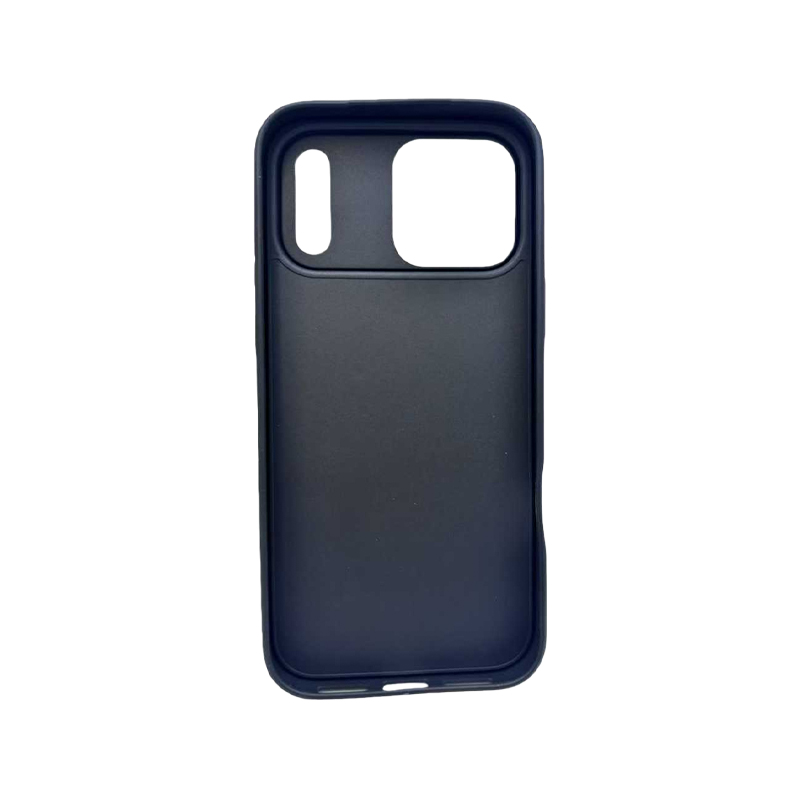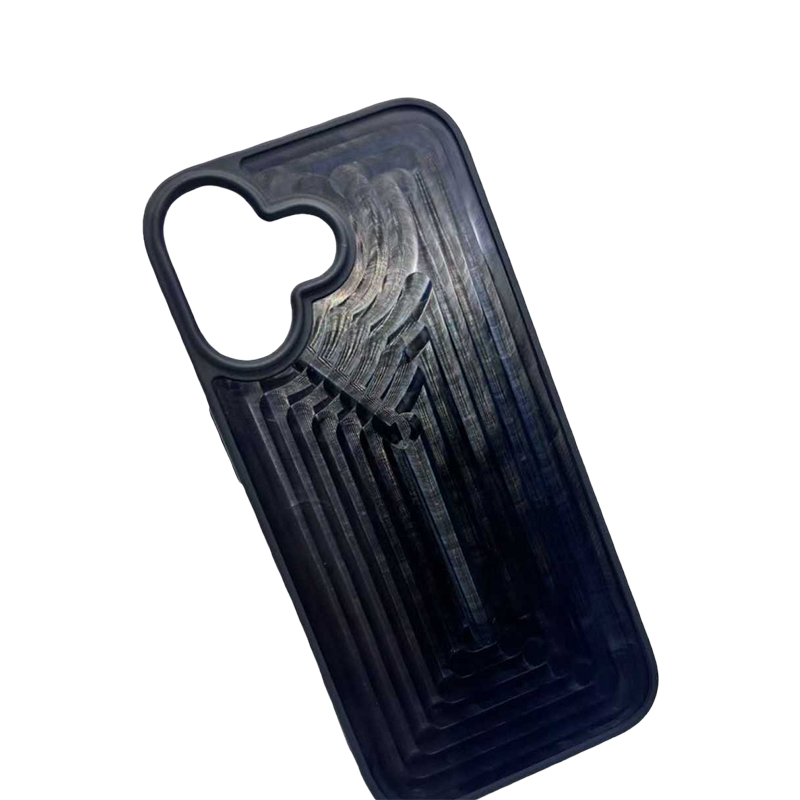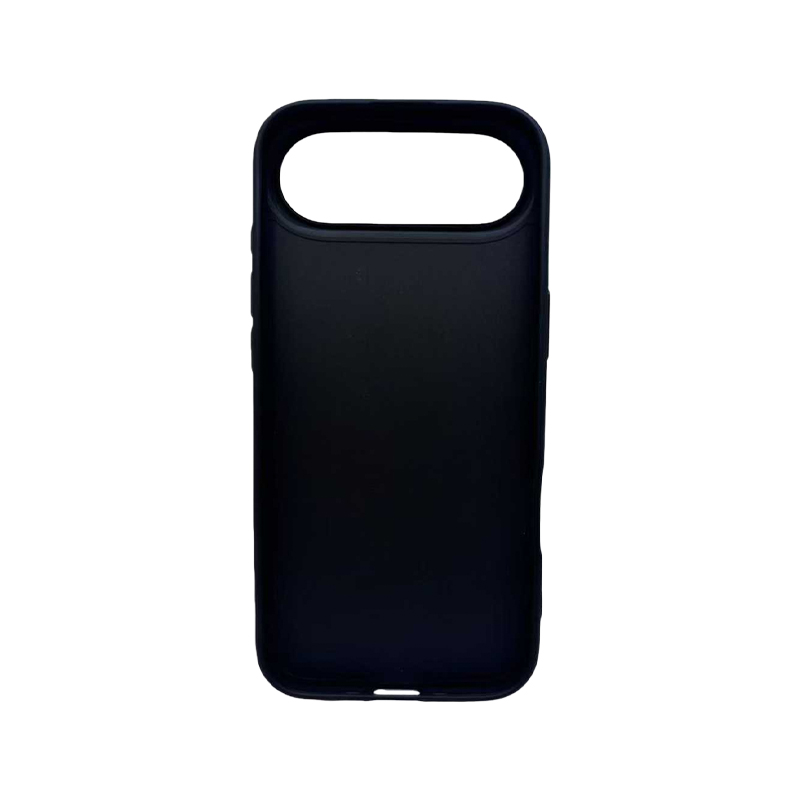Do phone cases really provide sufficient drop protection?
Release Time : 2025-11-13
With smartphones increasingly becoming a core tool in people's lives, their high repair costs and fragile structure have made phone protection a major concern. As the most common protective accessory, phone cases are widely used, providing "sufficient" protection in the event of an accidental drop.
1. The Drop Protection Principle of Phone Cases: Cushioning and Dispersing Impact Force
The core drop protection mechanism of phone cases lies in absorbing and dispersing the impact energy generated during a drop. When a phone falls from a height, the impact force upon hitting the ground is enormous. Without protection, this energy is directly transferred to the glass screen, metal frame, or internal components, easily causing breakage or damage. High-quality phone cases typically use elastic materials or composite structures, absorbing kinetic energy through material deformation and evenly dispersing the impact force over a larger area, thereby reducing localized stress concentration and minimizing the probability of damage to critical components.
2. Significant Differences in Protective Effect Between Different Materials and Structures
Not all phone cases offer the same level of protection. While cheap, hard plastic cases are lightweight and aesthetically pleasing, they lack cushioning and offer virtually no shock absorption during drops. Professional drop-proof cases, on the other hand, often employ a multi-layered structure: an outer layer of hard PC to resist scratches, an inner layer of soft TPU to absorb impact, and thickened corners to further enhance protection for the most vulnerable areas. Some high-end products even meet military-grade standards, meaning they can effectively protect the phone in multiple drop tests from heights of 1.2 to 1.8 meters. Therefore, whether a phone case provides sufficient protection largely depends on its materials and engineering design.
3. Variables in Real-World Use Affecting Protective Effect
Even with high-quality phone cases, protective effectiveness is still constrained by several practical factors. First, the drop height and angle—a fall from a table is significantly different from a fall from the second floor; second, the surface material—concrete is more damaging than carpet; and third, the phone model itself—curved screens, ultra-thin bodies, or bezel-less designs may make the screen more exposed, making it difficult to completely cover it even with a case. Furthermore, with prolonged use, phone cases may age, crack, or loosen, leading to a decrease in protective performance. Therefore, "sufficient protection" is not absolute but a relative and dynamic concept.
4. Limitations of Phone Cases: Incomplete Protection
It must be clearly understood that phone cases are not "safes." They primarily provide protection against accidental drops from low to moderate heights in daily life, and may still fail in extreme situations. Especially some cases that prioritize extreme thinness or transparent aesthetics often compromise on protective capabilities. In addition, most phone cases do not completely cover the front of the screen; if the screen lands face down, there is still a risk of screen breakage. Therefore, relying solely on phone cases is insufficient to address all risks; combining them with tempered glass screen protectors and avoiding high-risk environments is a more reliable approach.
5. User Selection Advice: Balancing Aesthetics, Feel, and Protection
Faced with a wide variety of phone cases on the market, consumers should make rational choices based on their own usage habits. For those who frequently engage in outdoor activities, are prone to slipping, or do manual labor, it's recommended to prioritize drop-protective cases with military-grade certification, four-corner airbag design, and full-coverage edges. Office workers or those who prioritize aesthetics can opt for mid-range products that balance thinness and basic cushioning. Regularly checking phone cases for deformation or loosening, and promptly replacing worn parts, is also crucial for maintaining protective effectiveness.
In conclusion, phone cases do provide effective drop protection in most everyday scenarios, but their sufficiency depends on product quality, usage environment, and user expectations. They are not a panacea, but they offer a highly cost-effective first line of defense. Choosing and using phone cases appropriately, combined with other protective measures, is the best way to protect your delicate and expensive smart device.
1. The Drop Protection Principle of Phone Cases: Cushioning and Dispersing Impact Force
The core drop protection mechanism of phone cases lies in absorbing and dispersing the impact energy generated during a drop. When a phone falls from a height, the impact force upon hitting the ground is enormous. Without protection, this energy is directly transferred to the glass screen, metal frame, or internal components, easily causing breakage or damage. High-quality phone cases typically use elastic materials or composite structures, absorbing kinetic energy through material deformation and evenly dispersing the impact force over a larger area, thereby reducing localized stress concentration and minimizing the probability of damage to critical components.
2. Significant Differences in Protective Effect Between Different Materials and Structures
Not all phone cases offer the same level of protection. While cheap, hard plastic cases are lightweight and aesthetically pleasing, they lack cushioning and offer virtually no shock absorption during drops. Professional drop-proof cases, on the other hand, often employ a multi-layered structure: an outer layer of hard PC to resist scratches, an inner layer of soft TPU to absorb impact, and thickened corners to further enhance protection for the most vulnerable areas. Some high-end products even meet military-grade standards, meaning they can effectively protect the phone in multiple drop tests from heights of 1.2 to 1.8 meters. Therefore, whether a phone case provides sufficient protection largely depends on its materials and engineering design.
3. Variables in Real-World Use Affecting Protective Effect
Even with high-quality phone cases, protective effectiveness is still constrained by several practical factors. First, the drop height and angle—a fall from a table is significantly different from a fall from the second floor; second, the surface material—concrete is more damaging than carpet; and third, the phone model itself—curved screens, ultra-thin bodies, or bezel-less designs may make the screen more exposed, making it difficult to completely cover it even with a case. Furthermore, with prolonged use, phone cases may age, crack, or loosen, leading to a decrease in protective performance. Therefore, "sufficient protection" is not absolute but a relative and dynamic concept.
4. Limitations of Phone Cases: Incomplete Protection
It must be clearly understood that phone cases are not "safes." They primarily provide protection against accidental drops from low to moderate heights in daily life, and may still fail in extreme situations. Especially some cases that prioritize extreme thinness or transparent aesthetics often compromise on protective capabilities. In addition, most phone cases do not completely cover the front of the screen; if the screen lands face down, there is still a risk of screen breakage. Therefore, relying solely on phone cases is insufficient to address all risks; combining them with tempered glass screen protectors and avoiding high-risk environments is a more reliable approach.
5. User Selection Advice: Balancing Aesthetics, Feel, and Protection
Faced with a wide variety of phone cases on the market, consumers should make rational choices based on their own usage habits. For those who frequently engage in outdoor activities, are prone to slipping, or do manual labor, it's recommended to prioritize drop-protective cases with military-grade certification, four-corner airbag design, and full-coverage edges. Office workers or those who prioritize aesthetics can opt for mid-range products that balance thinness and basic cushioning. Regularly checking phone cases for deformation or loosening, and promptly replacing worn parts, is also crucial for maintaining protective effectiveness.
In conclusion, phone cases do provide effective drop protection in most everyday scenarios, but their sufficiency depends on product quality, usage environment, and user expectations. They are not a panacea, but they offer a highly cost-effective first line of defense. Choosing and using phone cases appropriately, combined with other protective measures, is the best way to protect your delicate and expensive smart device.







